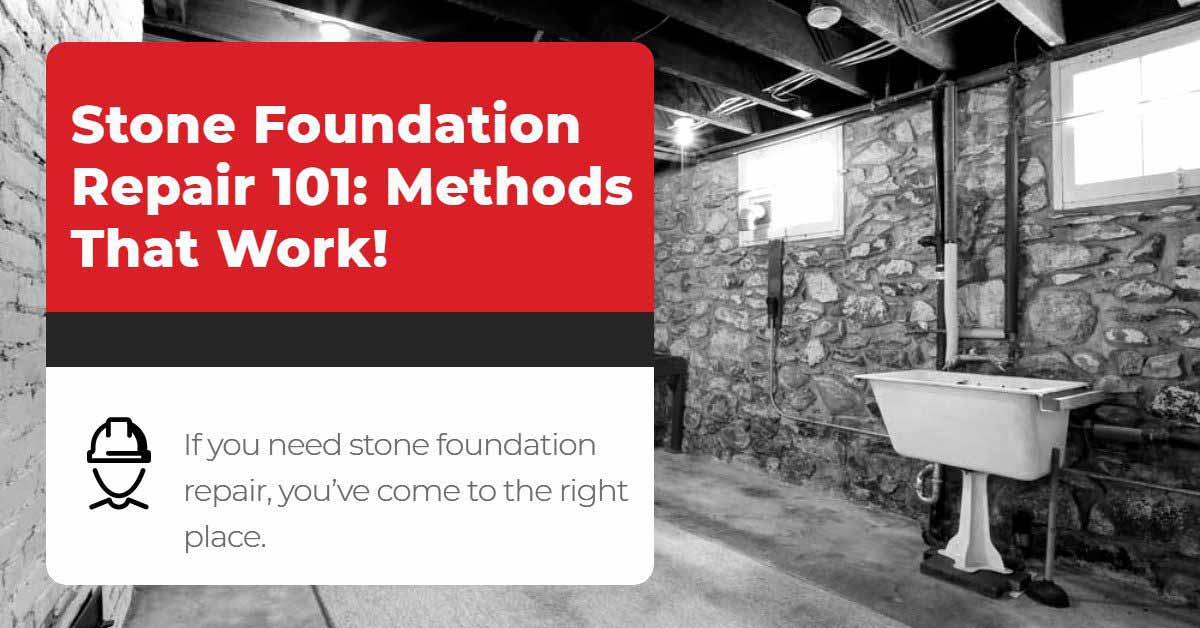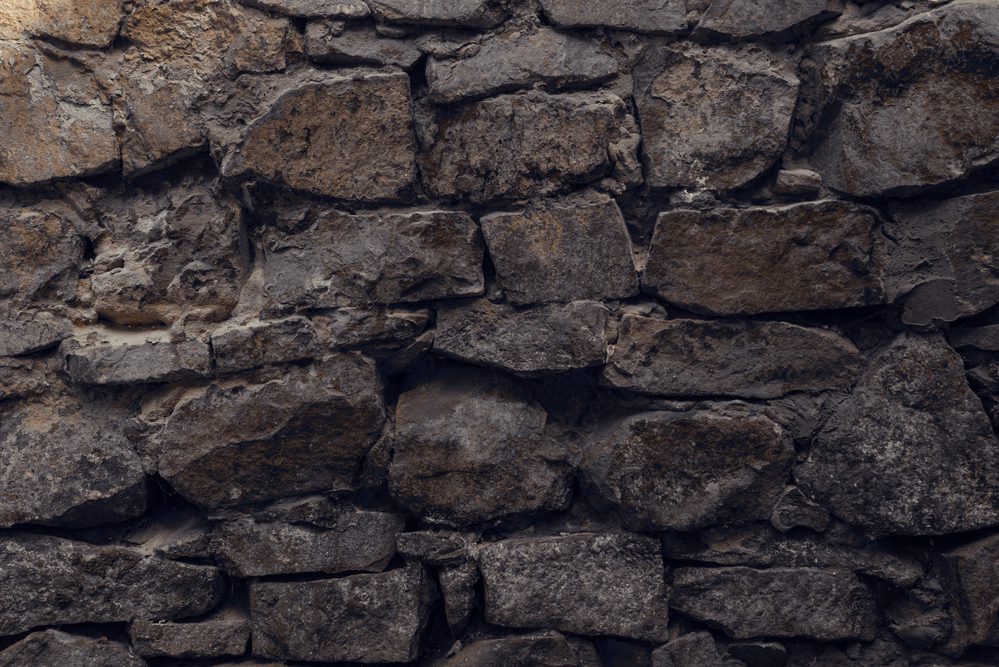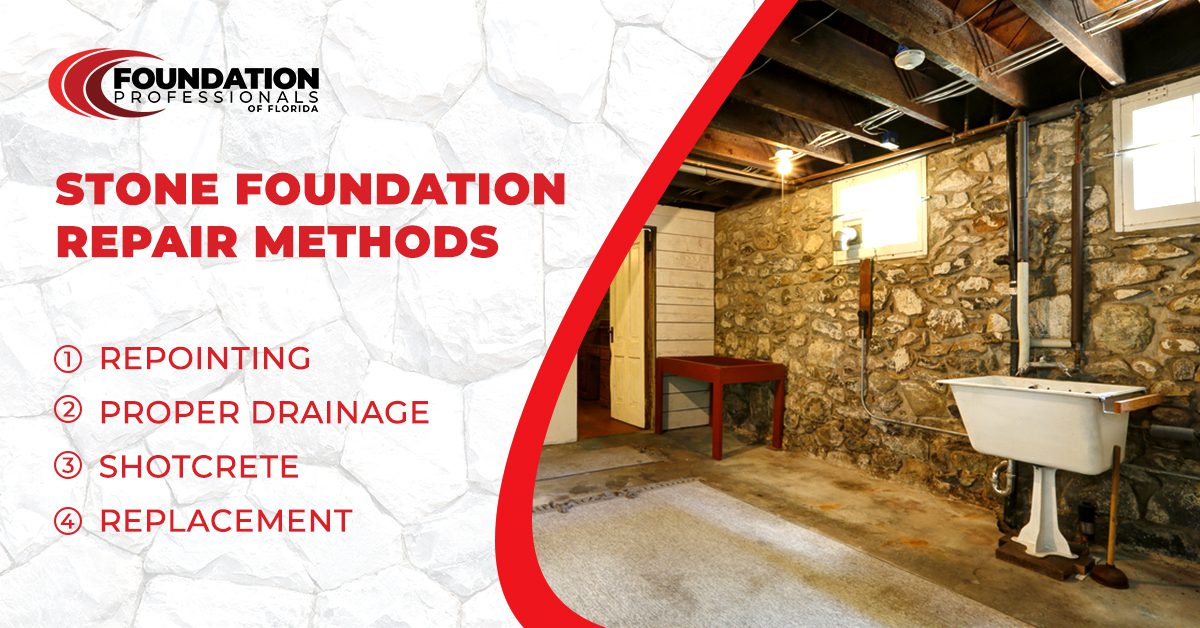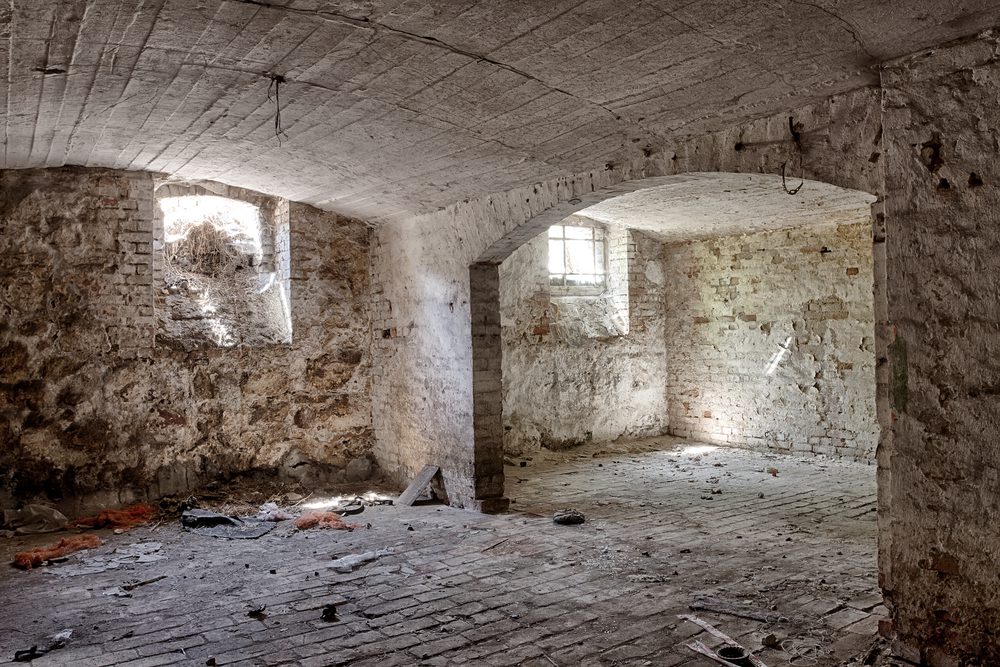If your home was built around the early 1900s, you might notice that your basement or foundation is made of stone. Before poured concrete and block walls came into use, foundations were dug out by hand and then constructed using stone brought in by horse and wagon. Even castles and churches were built using stone, and most of them are still standing today.
There isn’t a lot of accurate information on stone foundations, especially what to do when they need repair. That’s where this article comes in. In this article we go over if your stone foundation needs repair, why they begin to fail, types of stone used, and repair methods that work. Stick around and get the information you’ve been looking for.
Does Your Stone Foundation Need Repair?
Here are some signs that your stone foundation needs to be repaired.
Mortar is falling out – Mortar is a workable paste that hardens to bind stone together, seal irregular gaps, spread the weight, and sometimes add decorative colors. The most common mix is called Portland cement. Crumbling mortar can be compared to pulling a ball out of a ball pit, the structure might not move, or it could collapse the whole system.
Bulging or leaning wall – If enough of the old mortar falls out, stones will start shifting around, causing the wall to lean and bulge.
Loose stones – Once the mortar starts to flake and fall out, the stones will begin to shift and fall out. They are most common at walls and corners on the outside above the ground.
Cracked stone walls – If you notice any cracks in stones, now would be a good time to start repairing them.
Water leakage – Dry-laid stone walls placed without the use of mortar are prone to leak water. Initially, the water was meant to pass through the wall, continue across a sloped floor. Then it would be collected outside.
Why Do Stone Foundations Fail?
Now that you know the signs of damage let’s talk about why.
Water and moisture – Moisture penetration through stone foundations erodes the mortar, causing it to flake, and hydrostatic pressure is caused by water-saturated soil pushing against the foundation.
Frost – When the moisture in the soil freezes, it causes the soil to expand. As the weather grows warmer and the moisture in the soil melts, the soil contracts. This movement in the soil can cause the foundation to shift.
Vehicle traffic – If your home is near a road, the constant pressure from cars can affect your stone foundation wall. Another scenario is when a car crashes into your home, hitting the top of the stone. Not good!
Modification – Contractors may have renovated your stone foundation with insulation, storm windows, siding, caulking, or central heating. These improvements change how the building works and how water and moisture escapes. If you added a door or window after the foundation was already completed, the loss of stone in those areas might destroy the entire wall’s integrity.
Roof spillage – Roof spillage is when water constantly pours over the side directly onto the stone’s exterior. This can lead to frost heaving, water leakage, moisture penetration, and more.
Trees – Trees growing to close the foundation should be removed. Look at the branches of the tree and how far they spread out. Their roots are most likely the same distance away.
Types Of Stone Foundations
It’s important to note what stone was used to construct your basement, foundation, or cellar. Knowing what rock you have is crucial because the expansion and contraction rate is different from stone wall to a stone wall. Here are some of the most common rocks.
Basalt – A dark or black fine-grained volcanic rock commonly formed in a columnar structure.
Gneiss – A metamorphic rock banded, layered, or “foliated” in design, coarse-grained, principally made up of feldspar, quartz, and mica.
Granite – A hard granular, crystalline igneous rock widely used in building construction.
Laterite – Formed by weathering of igneous rocks in moist warm climates or a clay-soil high in aluminum oxide and iron.
Limestone (depending on the quality and hardness) – Limestone is a hard sedimentary rock, principally Dolomite or Calcium Carbonate.
Marble – Not a very common foundation or wall stone, but frequently found near marble quarries.
Quartzite – A rugged granular rock, possibly silicified sandstone (sarsen stones).
Trap stone – Any dark igneous rock crushed to random shapes.
Travertine stone – Stone formed in hot springs and limestone caves, similar to marble, granite, onyx, and limestone.
Avoid Softer Materials Such As:
Sandstone – A sedimentary rock formed by sand (quartz) grains cemented together, typically red, yellow, or brown; (may be used in foundations depending on quality, hardness, stability). Brownstone, famous for building facades, lintels, steps, is a type of sandstone.
Slate “stone” – Not common, again depending on hardness and stability and resistance to fracturing.
Methods Of Stone Foundation Repair (Also Called “Repointing”)
Properly built stone foundations can be some of the most structurally sound foundations around. The stone may leak water in a process called “weeping,” so it’s good to monitor mortar joints, voids, or cracks. Contractors inexperienced with stone foundations often assume the old mortar, being gritty, sandy, and loose, needs to be entirely replaced. They presume it started like modern mortar and should ‘glue’ the stones together. However, the original mortar was used only to bed the stones and fill the irregular voids between them.
Here are some of the best methods of repairing a stone foundation.
Repointing – Sometimes, the problem is small enough to add new mortar to stones that are shifting or where old mortar is flaking. Other times, it’s good to re-patch the entire wall. You will want to brush away dirt, debris, and old flaking mortar and give it a good wash to prepare it for the new mix. Make sure to repoint the inside with pre-mixed rigid mortar and the outside with lime-based mortar. Both sides need to be repaired; otherwise, the problems will be half-solved. Contractors can handle this with no problem.
Proper drainage and runoff – Make sure water isn’t collecting at the surface of the stone. Keep water away by properly sloping the dirt out. Ensure your gutters or downspouts are not pouring right onto the walls. You can add extensions to carry the runoff further away from your home.
Shotcrete – After adding a steel mesh framework, shotcrete (a sprayed application of concrete) is applied to the existing walls with a high-pressure hose. This creates new concrete walls that bond to and replace the stone as the weight-bearing foundation. You may lose some space due to the wall’s added thickness and the stylized look of the rock, but it’s better than your foundation collapsing.
Replacement – If an entire area is deemed “damaged beyond repair,” it will probably be safer to replace a whole section with new concrete blocks.
Learn more about – Signs of foundation failure.
Who Can Help?
Now that you know the signs, what caused the damage, and how they can be repaired, you know your stone foundation is not a lost cause. We know that too at Foundation Professionals of Florida. If you have a stone foundation that needs repair, or maybe you don’t know, call us anyway for a free inspection and quote.





